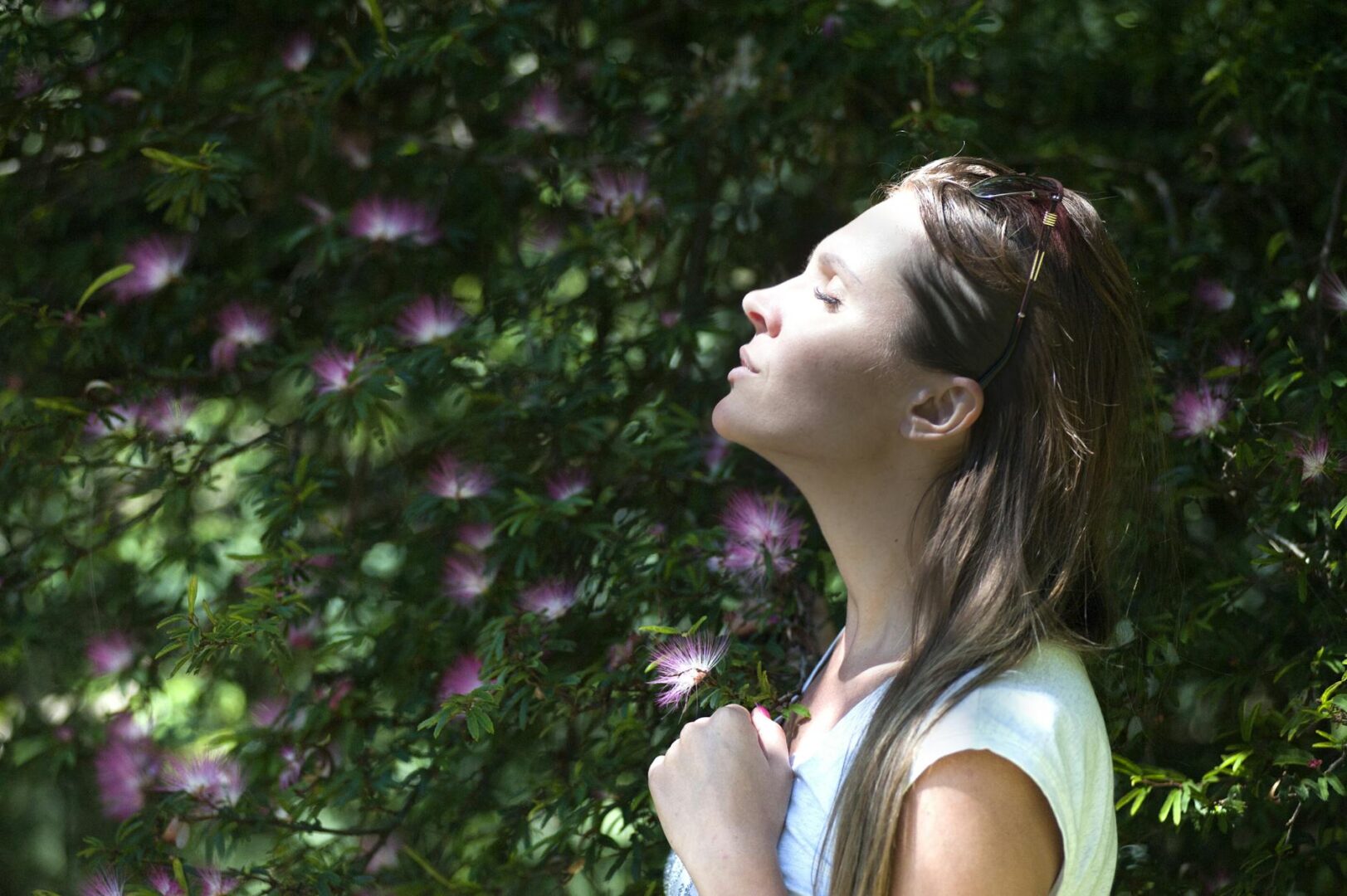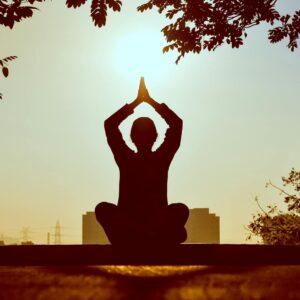
Meditation has always been vital in Indian culture. It’s a cornerstone of spiritual practices, often paired with breathing exercises. One such practice is ‘Pranayama,’ which means ‘breath control.’ Many Indians today want to blend these traditional methods with their busy lives. Learning these exercises online makes it easier and more convenient.
Understanding the Connection Between Breath and Mind
Breath connects the body and mind. Controlled breathing, or Pranayama, can change how we feel by affecting our nervous system. Studies show it helps reduce stress and anxiety. In Indian tradition, ‘Prana’ is the life force that flows through us, impacting our health. Modern science agrees that certain breathing patterns can calm the mind. Mindful breathing brings mental clarity and emotional stability. As the Bhagavad Gita says, “The mind is restless and hard to control, but it can be trained by constant practice.”
The Basics of Pranayama
Pranayama is a core part of Indian yoga. Different types include Anulom Vilom (Alternate Nostril Breathing), Kapalbhati (Skull Shining Breath), and Bhramari (Bee Breath). Each has its own technique:
- Anulom Vilom: Alternate nostril breathing helps balance energy.
- Kapalbhati: Quick exhalations cleanse the respiratory system.
- Bhramari: Humming sound soothes the nervous system.
Start with short sessions and gradually increase time. Proper posture and a calm setting are crucial. Each type offers unique benefits, like improved focus and reduced anxiety. Learning from qualified instructors is recommended to avoid risks.
Advanced Breathing Techniques for Deeper Meditation
Advanced techniques like Ujjayi (Victorious Breath), Surya Bhedana (Right Nostril Breathing), and Chandra Bhedana (Left Nostril Breathing) can enhance meditation:
- Ujjayi: Increases focus with a slight constriction in the throat.
- Surya Bhedana: Boosts energy by breathing through the right nostril.
- Chandra Bhedana: Promotes calmness by breathing through the left nostril.
These techniques offer benefits like higher energy levels and mental clarity. Follow step-by-step instructions for safety. Integrate them with mantra chanting or visualization for deeper meditation. Be mindful of any health conditions that may require precautions.
Incorporating Breathing Exercises into Daily Life
Breathing exercises can fit into daily routines easily:
- Morning rituals
- Breaks at work
- Before bedtime
Create a peaceful environment for practice. Choose a quiet space, use aromatic oils, or play soothing music. Technology, like meditation apps or online classes, can help you stay consistent. Group practice can also enhance motivation and accountability. Breathing exercises help manage daily stress and improve overall well-being. Make it a family activity to foster togetherness and mutual support. Real-life testimonials show how people have successfully integrated breathing exercises into their lives.
Common Challenges and How to Overcome Them
Starting with breathing exercises can be challenging. Common issues include difficulty focusing, inconsistent practice, or physical discomfort. Set realistic goals and use guided meditation to stay on track. Patience and persistence are key. Self-compassion is crucial; avoid self-judgment during practice. Physical discomfort can be managed by adjusting posture or using props like cushions or yoga blocks. Stay hydrated and maintain a healthy diet to support your practice. Seek support from community groups or online forums for motivation and accountability.
Enhancing Meditation with Mangalam Camphor Tablets
Breathing exercises are essential for calming the mind during meditation. Mangalam Camphor Tablets can enhance your meditation experience.
It is believed to propitiate the Gods and invite blessings. In Ayurveda, camphor is valued for its therapeutic properties. It is believed to have respiratory benefits and is used in aromatherapy for its relaxing and invigorating effects.
Mangalam Camphor Tablets: More Than Just a Fragrance
- Versatile Use: These camphor tablets are ideal for a variety of purposes beyond religious ceremonies. Use them for meditation, yoga, or simply to create a calming atmosphere in your home.
- Long-lasting: The compact 50-gram jar ensures you have an ample supply of camphor tablets for your spiritual needs.
- Convenient Packaging: The sturdy bottle keeps your camphor tablets fresh and protected, ready for whenever you need them.
Elevate your spiritual practice and cultivate a sense of peace and well-being with Mangalam Camphor Tablets from Poojn.in.
Embrace the Journey of Breathing and Meditation
Incorporating breathing exercises into your daily life can be a transformative journey. These ancient practices, rooted deeply in our rich Indian heritage, offer a path to inner peace and mental clarity. By dedicating just a few minutes each day, you can experience a profound sense of calm and well-being.
Remember, it’s perfectly normal to face challenges along the way. Stay patient, be kind to yourself, and seek guidance when needed. Whether you practice alone, with family, or in a community, the rewards of consistent practice are immense.
Embrace this journey with an open heart. Allow the wisdom of our traditions to guide you towards a calmer, more centered life. With the convenience of online resources, integrating these practices into your busy schedule has never been easier.
Take a deep breath, and start today. Your mind and body will thank you.
FAQs on Breathing Exercises for Meditation: This is How You Calm Your Mind
What is the best breathing exercise for beginners?
The best breathing exercise for beginners is deep belly breathing. Sit comfortably, place your hand on your belly, and take a deep breath in through your nose, letting your belly rise. Breathe out slowly through your mouth.
How long should I practice breathing exercises?
Start with 5 minutes a day and gradually increase to 15-20 minutes. Consistency is key, so practice daily to see the best results.
Can breathing exercises help reduce stress?
Yes, breathing exercises can help reduce stress by activating the body’s relaxation response. This helps lower heart rate and blood pressure, promoting a sense of calm.
What is the 4-7-8 breathing technique?
The 4-7-8 technique involves inhaling for 4 seconds, holding the breath for 7 seconds, and exhaling for 8 seconds. This method can help calm the mind and improve sleep.
Do I need any special equipment for breathing exercises?
No, you don’t need any special equipment. Just a quiet space where you can sit or lie down comfortably is enough.
Can breathing exercises improve focus?
Yes, regular practice of breathing exercises can improve focus and concentration by increasing oxygen flow to the brain and reducing mental fatigue.
Is it normal to feel dizzy during breathing exercises?
Feeling slightly dizzy during breathing exercises can be normal, especially if you are new to it. If dizziness persists or worsens, stop the exercise and consult a healthcare professional.
How do breathing exercises help with meditation?
Breathing exercises help with meditation by calming the mind and body, making it easier to enter a meditative state. They also help maintain focus and reduce distractions.


